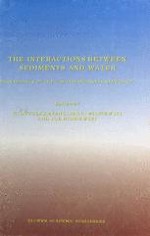1997 | OriginalPaper | Chapter
Comparison of Two Reagents, Sodium Pyrophosphate and Sodium Hydroxide, in the Extraction of Labile Metal Organic Complexes
Authors : G. E. M. Hall, P. Pelchat
Published in: The Interactions Between Sediments and Water
Publisher: Springer Netherlands
Included in: Professional Book Archive
Activate our intelligent search to find suitable subject content or patents.
Select sections of text to find matching patents with Artificial Intelligence. powered by
Select sections of text to find additional relevant content using AI-assisted search. powered by
The international reference lake sediment, LKSD-4, was used to compare Hg, organic C and Zn extracted from its’ soluble organic’ phase by two commonly used reagents: 0.1 M Na4P207 solution at pH 10 and 0.5 M NaOH solution at pH 12. While recoveries of Hg and Zn by 0.1 M Na4P2O7 are not affected by changes in sample weight to reagent volume ratio (W/V) or contact time, those by NaOH show a marked dependency. In general, the NaOH leach extracts more organic C and Hg from LKSD-4 but less Zn. Over the range of conditions studied, the NaOH-based method extracted 4.7–9.8% C, 27-103 ng g−1 Hg and 19–69 υg g−1 Zn from LKSD-4, compared to 2.3–2.8% C, 17–24 ng g−1 Hg and 64–72 μg g−1 Zn by the Na4P2O7 leach. Clearly, different groups of organic substances are being dissolved by these two reagents and therefore a comparison of data from different laboratories becomes meaningless. This paper suggests that more research is needed into the exact nature of metal-organic associations extracted by selective leaches and into associated artifacts of extraction such as readsorption phenomena.
